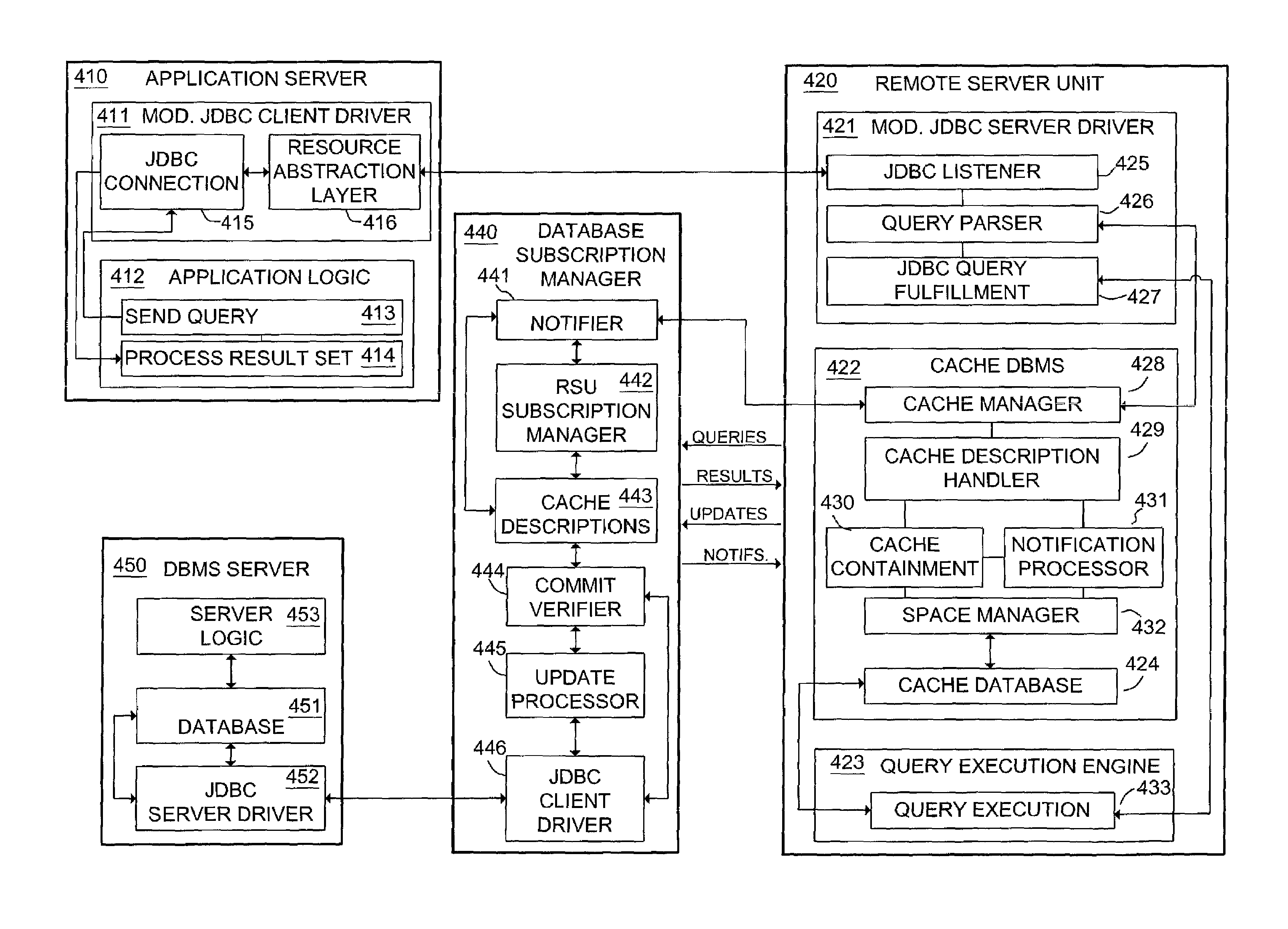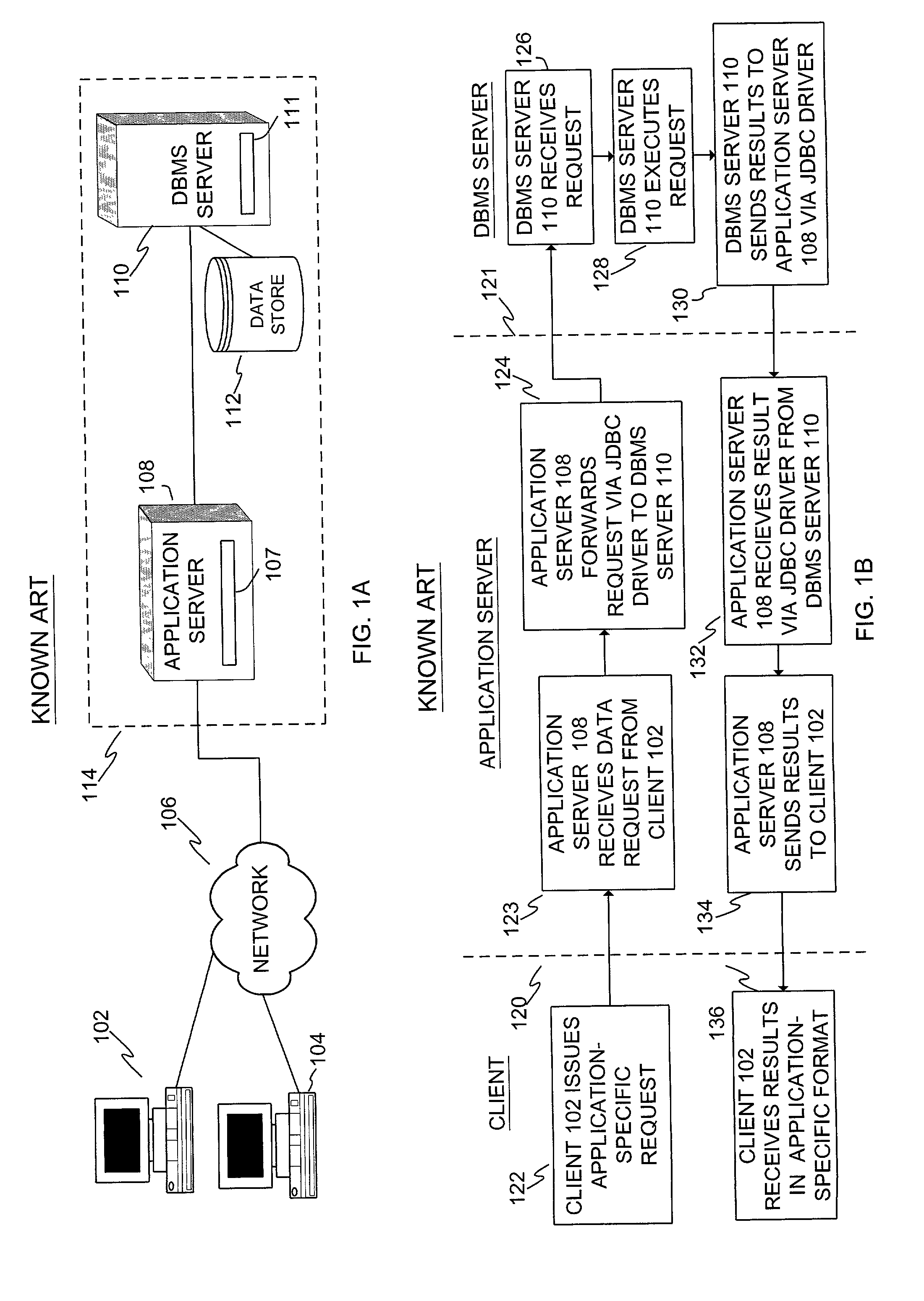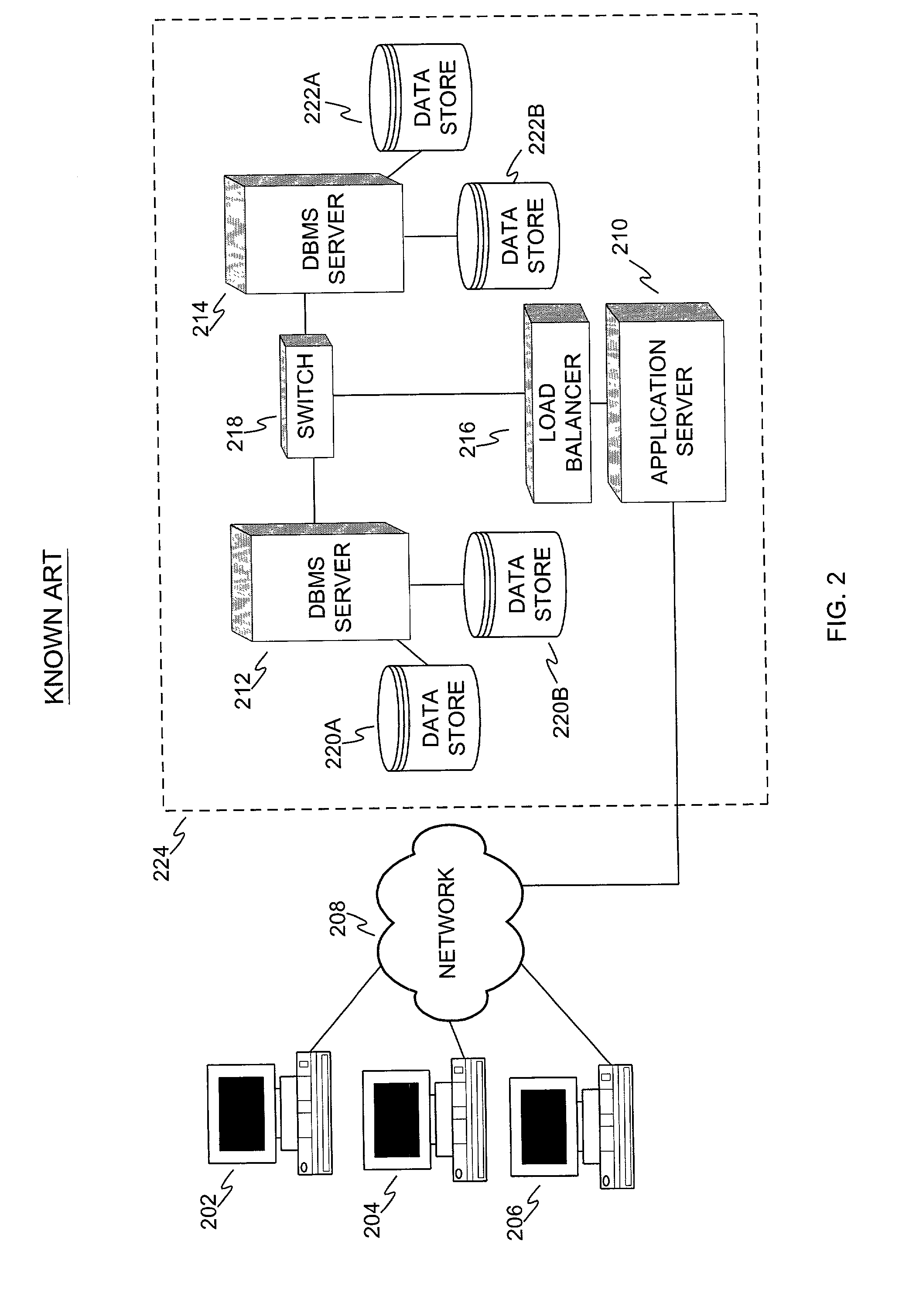Systems and methods for managing distributed database resources
a database resource and distributed database technology, applied in the field of relational database management systems and applications, can solve the problems of limited capacity for handling a very large number of data queries or transactions, limited dbms capacity increase returns for companies, and complex implementation, so as to reduce costs, expand the capacity of database resources, and avoid loss of quality or availability.
- Summary
- Abstract
- Description
- Claims
- Application Information
AI Technical Summary
Benefits of technology
Problems solved by technology
Method used
Image
Examples
Embodiment Construction
[0029]FIG. 3A is a schematic diagram of an embodiment of the present invention.
[0030]System 300, in an embodiment, includes a computer 310 of a user. Computer 310 can include a processor 311 coupled via bus 313 to network port 315 and memory 317. Processor 311 can be, for example, an Intel Pentium® 4 processor, manufactured by Intel Corp. of Santa Clara, Calif. As another example, processor 311 can be an Application Specific Integrated Circuit (ASIC). An example of bus 313 is a peripheral component interconnect (“PCI”) local bus, which is a high performance bus for interconnecting chips (e.g., motherboard chips, mainboard chips, etc.), expansion boards, processor / memory subsystems, and so on.
[0031]Network port 315 can be an Ethernet port, a serial port, a parallel port, a Universal Serial Bus (“USB”) port, an Institute of Electrical and Electronics Engineers, Inc. (“IEEE”) 1394 port, a Small Computer Systems Interface (“SCSI”) port, a Personal Computer Memory Card International Asso...
PUM
 Login to View More
Login to View More Abstract
Description
Claims
Application Information
 Login to View More
Login to View More - R&D
- Intellectual Property
- Life Sciences
- Materials
- Tech Scout
- Unparalleled Data Quality
- Higher Quality Content
- 60% Fewer Hallucinations
Browse by: Latest US Patents, China's latest patents, Technical Efficacy Thesaurus, Application Domain, Technology Topic, Popular Technical Reports.
© 2025 PatSnap. All rights reserved.Legal|Privacy policy|Modern Slavery Act Transparency Statement|Sitemap|About US| Contact US: help@patsnap.com



